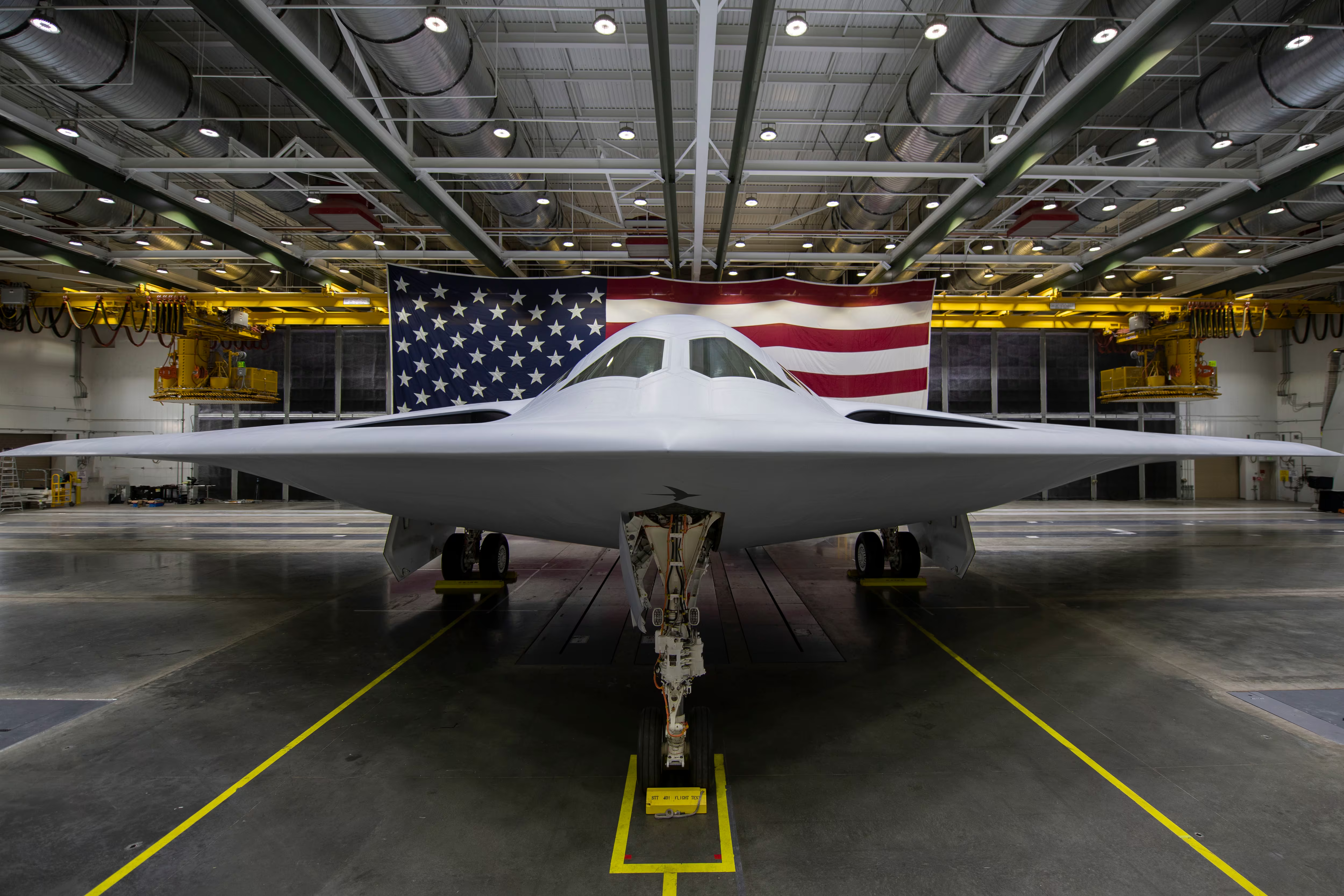In testimony before the Senate Armed Services Committee, Air Force Chief of Staff Gen. David Allvin made headlines when he hedged about the ultimate size of the B-21 Raider buy, explaining that new technologies may supplant the aircraft by the late 2030s.
“I think there are other technological advancements that we would see to be able to augment [the B-21] and have a better mix … before we commit to [the B-21] as being the platform [that will serve as the backbone of the future bomber force] beyond that,” he explained.
That is a bet on a hypothetical and distant technological vision. Now is not the time to suggest the Air Force dial back on B-21 acquisition. Credible combat capacity in mass is required, given the scale of our threats in multiple regions, the unique role bombers play and the fragility of our reusable long-range strike enterprise.
Given their global range, ability to carry large payloads and unmatched stealth, B-21s will play a crucial role in missions that span the operational spectrum. In times of peace, they will deter adversaries, reassure allies and favorably shape regions that are critical to our national interests. In times of conflict, they will be able to strike large numbers of targets at sea and on land deep behind enemy lines, and serve as key information nodes as part of the Combined Joint All-Domain Command and Control complex. That involves gathering data with onboard sensors, processing battlespace information at the combat edge, collaborating with other mission assets, and creating decisive non-kinetic and kinetic effects. No other weapon system can do this.
The U.S. is the only free-world nation with bombers. Long-range missiles may be able to strike distant targets, but these multimillion-dollar-a-shot missiles cost too much to use in mass and are easier to shoot down, and the industrial base would struggle to replenish them. Ukraine and Israel hold exemplary lessons in this regard.
Despite the value the Air Force’s bomber force provides, it was singled out for cuts in recent decades. The United States ended the Cold War with about 400 bombers. Today, it has an estimated 141, and only about 59 are available for combat at any given time. The average age of that force is nearly half a century old. In fact, the U.S. presently only possesses 20 stealthy bombers — B-2s — with the survivability necessary to penetrate enemy defenses.
Nor are things set to improve soon. Re-engining B-52s, while important, will take a significant portion of this inventory offline for a multiyear period starting this decade. For context, the B-52 just celebrated the 72nd birthday of its inaugural flight; many new technologies have come on the scene since 1952, but the B-52 remains the backbone of the free world’s bomber force.
The B-21 now represents the only pathway for the U.S. military to regain its long-range strike capability and capacity. Increasing the B-21′s planned production rate now would be a prudent move given all the threats facing the U.S. And it should be a priority, as it promises to be the most cost-effective weapon system in the U.S. inventory.
While new technology may eventually supplant the B-21, that level of innovation will not be developed, matured and proliferated in operationally relevant levels for decades. The Defense Department’s acquisition track record is filled with stories of capabilities that were just around the corner, but took far longer and cost far more to field than originally anticipated. Even then, it takes almost a decade to program money for a major new weapon system, have it work through Congress and then deliver capabilities on a flight line.
Given that the B-21 already represents unmatched, state-of-the-art technologies, hoping whatever is next will be mature and ready to acquire at scale by the middle of the 2030s is beyond high risk.
The irony of Gen. Allvin’s remarks is that the B-21 program is executing exceedingly well. As Secretary of the Air Force Frank Kendall remarked at the same hearing, the “B-21 has been performing close to the original schedule and costs and delivering capability.”
Few programs can make that claim — especially for an advanced weapon system as capable as the B-21. In fact, the program is executing so well that the Air Force was able to harvest over $1 billion in cost savings from it across the Future Years Defense Program versus what was anticipated.
Why would the Air Force contemplate truncating a program that is performing this well before it even takes delivery of the first operational B-21? The answer is likely found in the Department of the Air Force’s official testimony, which explained its budget request “takes risk in the medium term to balance immediate operational readiness needs at the level of maximum tolerable risk.” In other words, defense budget caps drove hard choices in this year’s request, and hedging on the B-21 is likely evidence of the pressures the Air Force is facing.
History has shown that budget-driven choices of this nature are penny-wise and pound-foolish.
“We are out of time,” Secretary Kendall warned attendees earlier this year at the Air and Space Force Association’s Warfare Symposium. “It’s because, for at least two decades, China has been building a military that is designed — purpose-built — to deter and defeat the United States if we intervene in the Western Pacific.”
He is exactly right. That is why B-21s must be procured at a rate and scale beginning this decade that aligns with pragmatic demand and the need to deter conflict in the Pacific, Europe and the Middle East. Now is not the time to punt to a future theoretical solution. As a defense leader once remarked: “If it’s always about ‘program next,’ you’ll never have a program at all.”
Retired U.S. Air Force Col. Mark Gunzinger is the director of future concepts and capability assessments at the Mitchell Institute for Aerospace Studies think tank.







